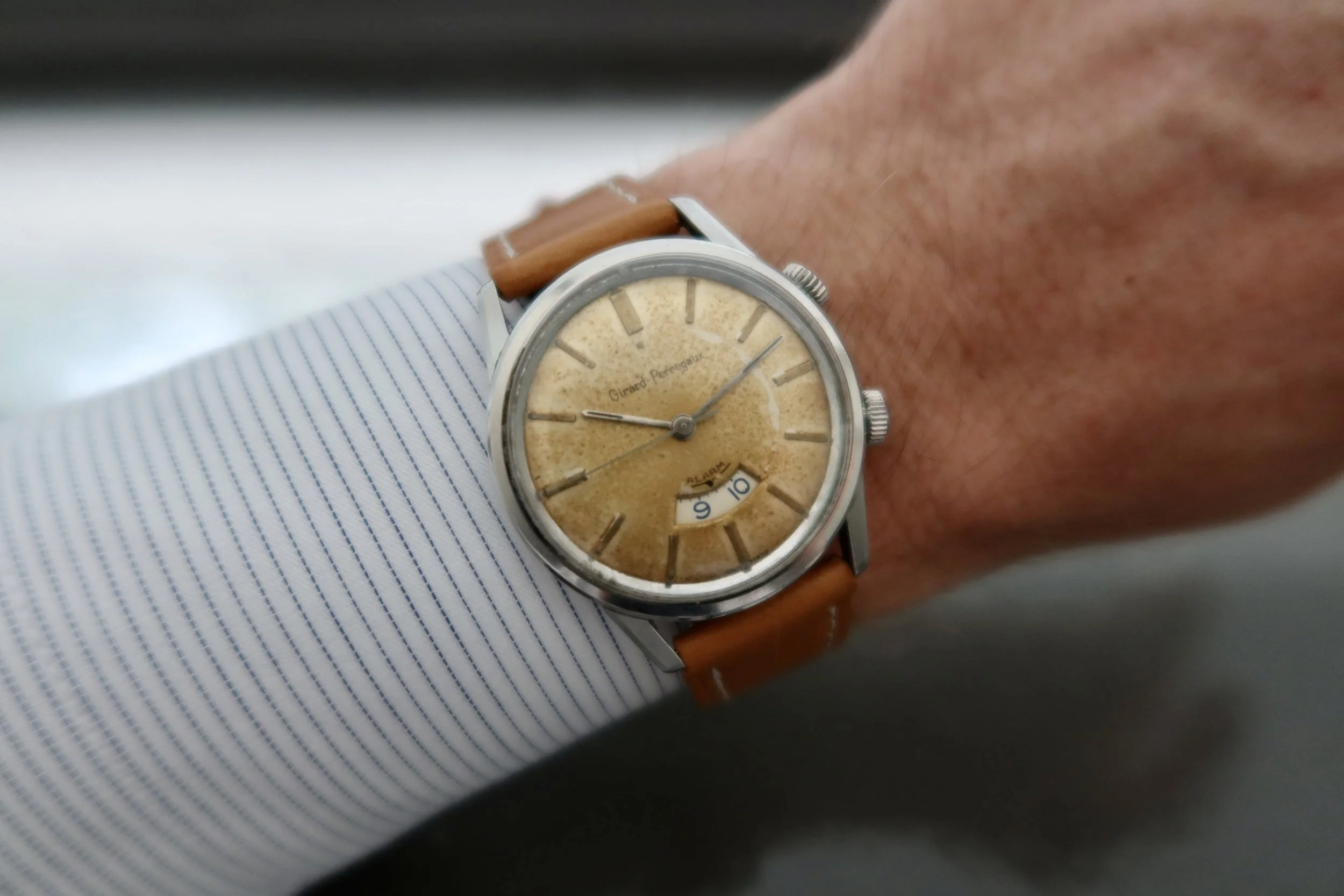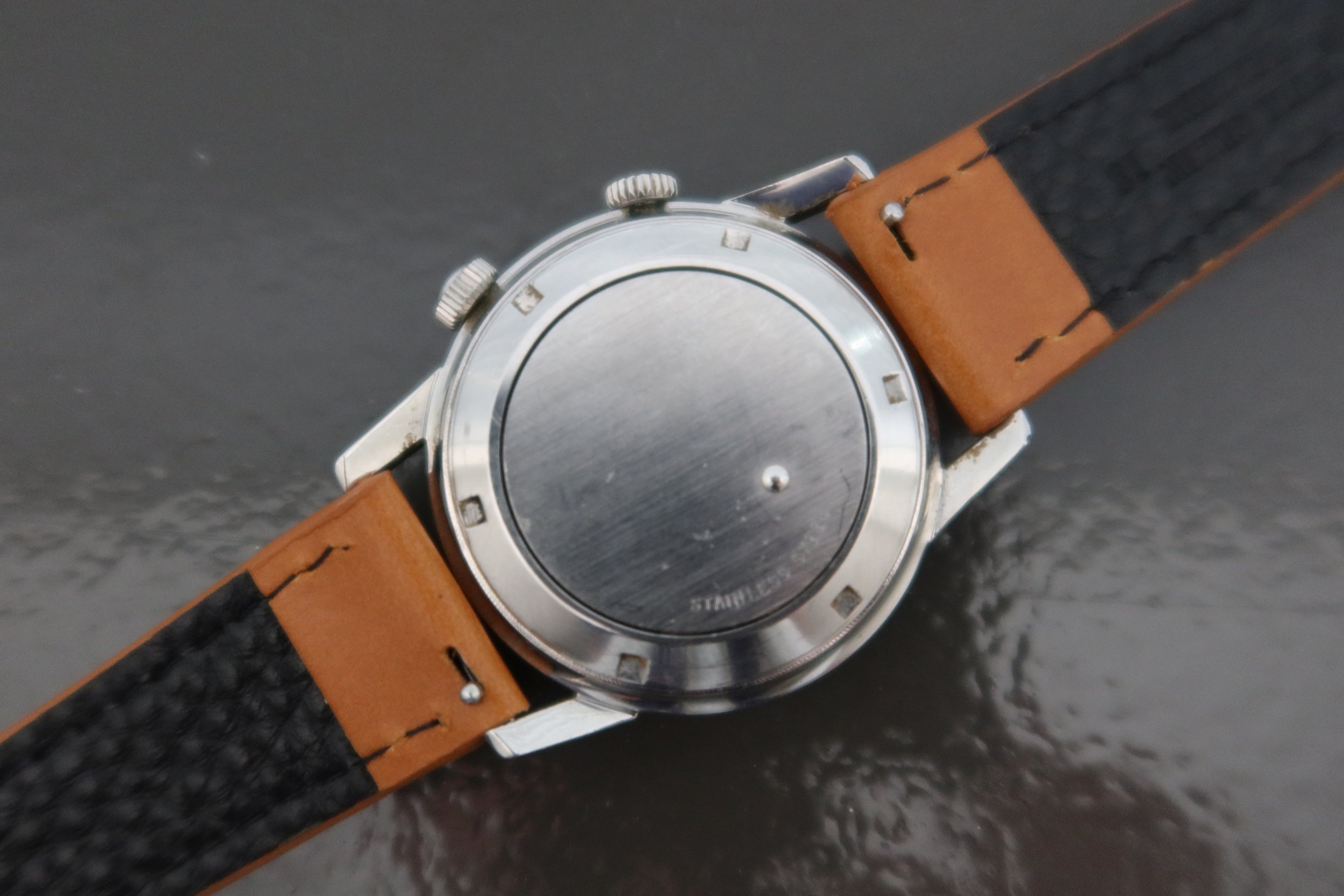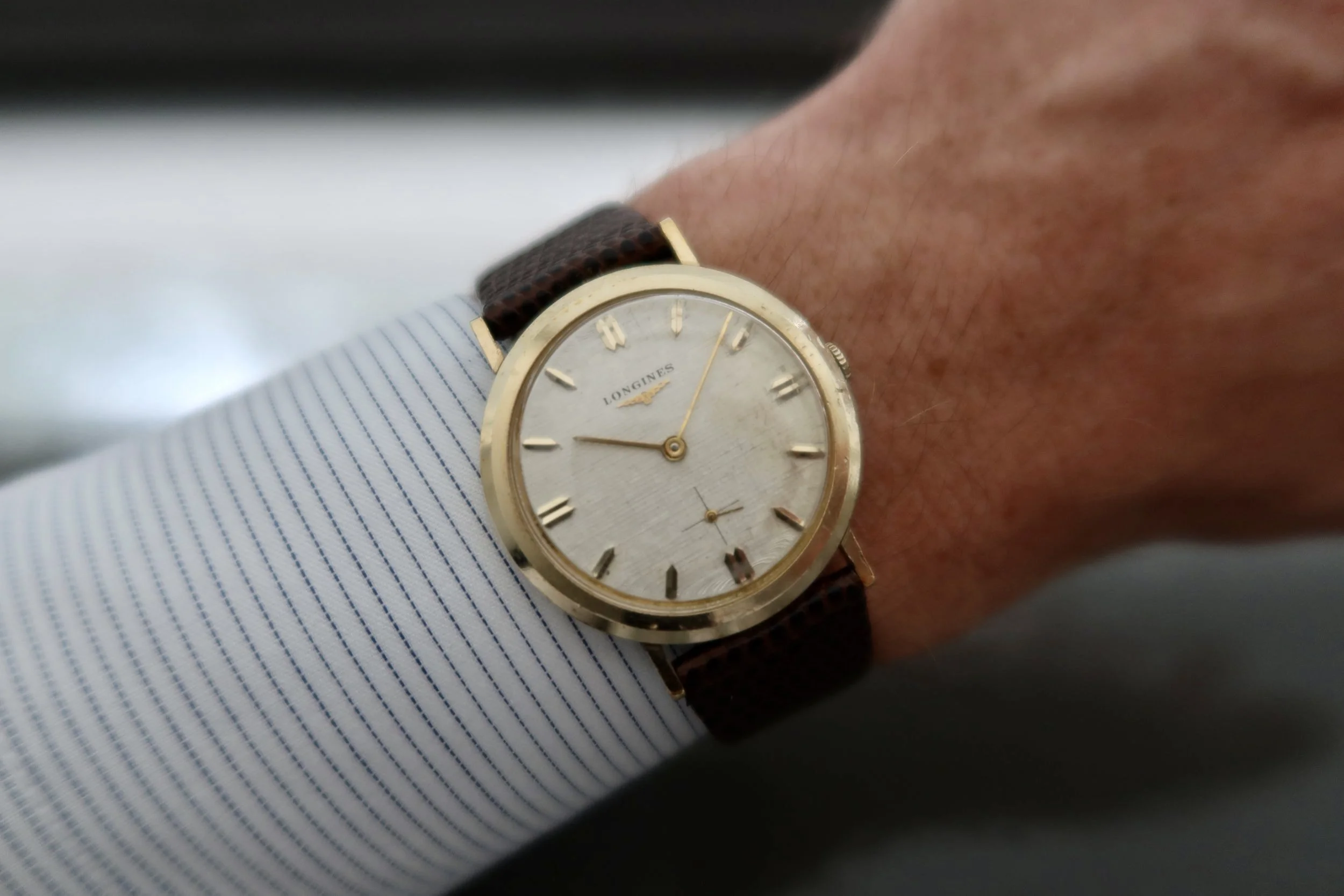The 1960's Girard Perregaux reference 7742 Alarm in Steel
For some of us, it may be hard to think of a time without cellphones. It seems like an essential to life today, and it is difficult to think about how things were done without them. This stretches to the simplest of things, like alarms on our phones that we take for granted.
Before cellphones, we used alarm clocks. Many people remember electronic alarm clocks, but there were also mechanical ones. An extension of this was mechanical watches that had alarm complications. These watches would allow the wearer to set an alarm for one specific time in the day, and would ring to notify the wearer of their chosen time. There are many brands that created watches with this complication, making it a competitive landscape. The Memovox from Jaeger LeCoultre, the Cricket from Vulcain, or the Tudor Advisor are some very well known examples of this type of watch. But another brand, Girard Perregaux, also competed in this space, namely with their reference 7742.
The reference 7742 was launched in 1960. It was the first serially produced reference that Girard Perregaux made with an alarm complication. They later came out with the reference 9091 with an updated case design, and the 9490 in 1972 that used an updated caliber, the caliber 112. Once the quartz revolution hit, they began producing quartz powered alarm watches and continued to release alarm complicated watches into the 90’s.
The reference was originally launched in only a stainless steel case and the total production number of this reference was 5860. In 1963, they released a 14k gold and a two toned gold/steel case version. They also released a gold plated cased version in 1966 during the last year of production for the reference. Based on research, it is known that only 100 were made in 14k gold, and 950 were made in the two-toned steel/gold case. It is currently unknown what the split of the remaining pieces were made in steel and gold plated cases.
The watch has a very strong appeal to it. The watch is 34mm in diameter, and the example we have today is in stainless steel. It has long lugs that angle inward, which make the watch sit with presence on the wrist. There are still strong bevels on the outside edges of the lugsThe watch features two crowns, one to control the hours, minutes, and to wind the mainspring to drive power to the movement. The other crown, located at 2 o’clock is used to work the alarm complication. The difference between the Girard Perregaux and some of the other contenders from this era like the Memovox is that instead of using a pointer on the dial, or a disk that points to a specific hour, the 7742 uses a rotating disk with a display window that runs from five to seven o’clock. There is then an arrow above the disk and whatever time is set on the disk will be when the alarm sounds. Looking at the crowns, the alarm crown is signed with an “A”, which stand for “alarm”. The crown that sets the time has a rounded end, which indicates it is likely a replacement.
The dial of this watch is where a lot of the magic comes from. Originally, the watch had a silver sunburst dial. But, this one has certainly seen some interesting aging. The dial has turned a bronze-brown colour, likely from exposure to moisture. As I always say, patina is a matter of personal preference. To those who enjoy patina, this is definitely such a unique dial. The watch has applied hour markers that have aged evenly with the dial. The Girard Perregaux name is printed on the dial in black, as well the “alarm” indicator at 6 o’clock. The alarm wheel is white, with blue text. Other alarm wheels have been seen on this reference with black text. Pairing this watch with a brown, cognac strap is a must. It brings out the beautiful dial colour which is really one of the most unique parts of the watch.
The alarm complication is something that has been covered at length on Life on the Wrist. Because it uses a similar mechanism to repeater watches, one could say that is really an under-appreciated complication. This reference runs on the caliber 11-09. This caliber is the definition of workhorse. The watch is based on the AS 1475 and is constructed nicely. The base movements was introduced in 1954 and produced until 1974. A. Schild was an ebauche and watch movement maker founded in the 1890’s and operaeted from Grenchen, Solothurn. There movements were used by many brands, including Jaeger LeCoultre and Favre Leuba. Unfortunately, the Quartz Revolution hit A. Schild hard and they were forced to merge with other watch manufactures to survive.
The caliber 11-09 has not been modified heavily by Girard Perregaux from the base movement. The movement remains fairly similar to that of the base, except for the Girard Perregaux name and serial number on the movement. The alarm hammer sounds great - just like a cricket when it goes off as it hits on the piece of metal that surrounds the movement.
Compared to other alarm complicated watches of this era, the reference 7742 could really be described as a no-nonsense watch. The case design and dial layout is very utilitarian and the movement is a reliable, well produced movement. Luckily for this watch though, the patina seen on the dial makes it stand out. It gives it more personality on the wrist and is something enjoyable to look at. It epitomizes the idea that what we go through, or in this case where a watch adventures to and how it deals with its adventures, gives us life, which the majority of the times, is what makes it worth it.
Enjoy!









